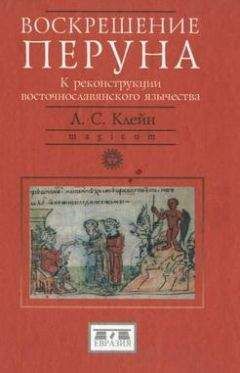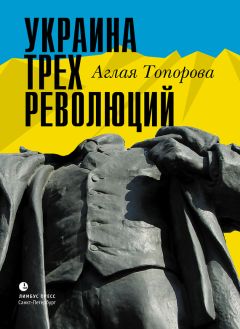The fourth concept was offered by Vyacheslav Ivanov and Valdimir Toporov, also structuralists and (if for no other reason than this) considered by the regime as frondeurs. They used the names of Slavic gods as their main source and compared them with other Indo-European names, social terms, and myths. On this basis they began reconstructing a developed mythology derived from the common Indo-European substrate (the «Basic Myth», the initial struggle of Perun against Volos -Veles, etc.). Their methodology was to a great extent borrowed from Levy-Strauss. It allowed them to reach such freedom of making connections that the results of their reconstructions became very rich, but, alas, lost the reliability. There is no direct proof of the struggle of Perun against Volos (and Volos, as distinct from Veles, probably is at all a new god, most likely having emerged as a transformation of the Christian Saint Vlasius/ Blasius, Bulgarian Vlas).
As far as Boris Rybakov's theory is concerned, it is analysed and criticized at great length in this work since it turned out to be the most influential, and until now remains such, particularly outside the confines of the scholarly world. Rybakov's use of material (the entire categories of which he simply lacked the professional qualifications to process) was already outdated at his time and often embarrassingly crude. The conclusions at which he arrived were not just unsound but often simply comical. In spite of all this, however, one must give him his due for his his considerable imagination and enthusiasm for his subject matter.
From the modern perspective, it is worth noticing that his works became the basis for modern neo-pagans, more and more noticeable since the 70s among the new religious movements. Produced by nationalism, in the conditions of the general political and ideological decline of the Soviet regime, as well as the crisis of the Russian Orthodoxy, this movement has ignored virtually all real data on ancient pagan cults and rituals and began to create new cults and rituals, formally combining the elements borrowed from the Indian and Germanic practices and aimed at the propaganda of such primordial cruelties as hatred of the aliens, militancy, isolationism and xenophobic nationalist solidarity. Ecological concerns of the present time (respect for nature) are being hijacked by the new pagans and recruited into their complete disavowal of the principles and norms of civilization.
Therefore, the proper analysis of genuine East Slavic cults and mythology appears important also in the context of clear seeing the alleged basement of the growing neo-pagan movements.
The present work introduces a new source for the analysis of old Slavic paganism, the Vainakh (Chechen-Ingush) folklore. In this folklore there is a character named Pir"on or Pirlon, whose name sounds close to the Slavic name Perun. This Vainakh character was interpreted by folklorists as a deriváte of a Pharao (genitive: Pharaoni; Pir"on might be a Caucasian distortion of the word «pharaon-»). However, by his functions he does not fit this role: he climbs up the heaven, thunders, and pours rain. In this, he is functionally equivalent to the Thunderer Perun. How could he get into the Vainakh folklore, however? In the last centuries, when Russians came to the Caucasus, they were already Christians and Perun was absent in their mythology.
Yet it appered that in the 8th century the Arabian caliph Mervan II with his troups went from Syria to the North Caucasus, further got deeper into the Khazar caganate, specifically into Slavic territory (he approached «Sacalib river»), caught 20 thousand of Slav prisoners, led them away and settled them down in Kakheti, i. e. in the neighbourhood of Chechenia. It is from these prisoners that the myths of Perun could penetrate the Vainakh tradition, where, having collided with Vainakh own mythology, they lost their sacral character and «sank» into folklore. Thus the stories of Perun (such as his commands to women to pour water from barrels, his connection with bread and mill, his control of old men and children, etc.) find close correspondence in East Slavic ethnography (popular beliefs, superstitions, fairy tales). This new material, never before used in the discussion of Perun, can be successfully used for reconstruction of Slavic myths. In addition, it would be necessary for our reconstruction to bring in the Slavic fairy tales which demonstrate close links with this material.
Rybakov's concept denies the very possibility of borrowing the name Perun from Slavs because in his view the supreme god of Slavs was Rod while Perun was only introduced by Prince Vladimir as a god for his military retinue. Yet the presence of Perun's traces in all Slavic territories refutes such a limitation. In fact, it is obvious that early Slavs did not at all have such a deity as Rod — this was an artificial construct produced by some ancient Russian authors, the construct based on a wrong reading of Greek Christian texts, the horoscopes that were called «genealogies» (literally, 'a study of kin or stock') by the Byzantines. The dependence on fate from the beginning of man's life, from birth, was understood by translators as expressed in a worship of a special figure —Rod ('birth' in Russian, also 'kin', or, more precisely, a 'kingroup'). «Rod» is connected to the verb meaning 4o give birth'. Hence its (and his) connection with Rozhenitsas (literally coinciding with 'women in childbirth') — maids of fate, Slavic Parcas, present at the person's birth and important for determining his/her fate.
Perun was not only the main god of Eastern Slavs but perhaps he was for some short time their only god, at least officially. In Russian chronicles there is, as Lowmianski has observed, some evidence that other gods mentioned in Vladimir's pantheon had been merely a late insert by a Christian editor. It appears that Vladimir's first religious reform was an attempt to establish monotheism on a pagan basis. Archaeological monuments previously interpreted as proof of Vladimir's six-gods pantheon don't stand up to close scrutiny of the material. In general, nearly all the main pagan sanctuaries ascribed to Eastern Slavs (two in Kiev, one in Novgorod and one in Pskov) are doubtful as such. In the present work this is addressed in great detail. Most likely, those «sanctuaries» are partly mundane (not sacral) objects, and partly remains of burials.
In support of his system of gods with Rod as a head, Rybakov also adduced the Zbruch idol, a tetrahedral stele with a number of carved anthropomorphic figures. A detailed analysis of this monument shows that these figures cannot be interpreted as Rod and gods of Vladimir's pantheon, nor can the whole monument be viewed as typically East Slavic. Chronologically it is later than the East Slavic Pagantum, and it is West Slavic in disposition, with some impact of the steppe nomads. Such idols occur in the region of the basin of Dnestr more than once. Both the West and South Slav tribes are historically known to exist there. It can be inferred from the historical context that they had undergone a comparatively late conversion to Christianity.
Logically speaking, Perun's attributes in people's imagination were gradually formed on the basis of his functions as a Thunderer. This process must date back to the time of the existence of the Indo-European community, and it continued after its dissolution. Such Perun's attributes as his mighty force and bellicosity obviously go back to the earliest stage in his evolution, and from these attributes come his connection with the oak, the hammer-axe, and the arrows, as well as in his impact on yield and fertility, and his general connection to women. However, establishing Thursday as Perun's day must have occurred already under the influence of Christian calendar.
That was the image elaborated in myths that got into the Vainakh folklore. Let us now consider the data presented by the Vainakh folklore and their correspondence to the East Slavic ethnography and folklore.
In Vainakh folklore there are stories about women sent by Perun to the neaven for pouring water and making rain. These stories express most likely th,e Slavic notions of witches and sorceresses — the rain-makers, or the «Blitzhexes» ('witches of lightning') as they were called by the Germans. It was believed in the 19th century Ukraine that the witches could steal the rain from heaven and hold it in buckets. In Afanasyev's collection of tales one can see witches flying in the heaven and rolling the barrels there (completely like in the Chechen stories of Pir"on's women), while the clang of these barrels created thunderstorms. In Russia, a related custom of breaking the barrels was used in order to call forth a rain.
What was originally contained in the barrels having been broken? In Russian fairy-tales it was the unusual or specially blessed children that are imprisoned-in a barrel. Such children (often the twins) were thought of as conceived by other-world spirits. The barrel with the children was left adrift in the sea. Upon landing, the wonderful children would break out of the barrel and be released to the freedom where the great future awaited them. This motif was frequently used as a legal device by usurpers on a throne in order to create a tie to a traditional royal dynasty (Sargon, Perseus). A similar idea was present in the custom of the trial by drowning (if she was really a witch, she wouldn't drown). The presence of «god's children» probably eventually led to the substitution of drowning by exile. Indeed, according to the old Russian custom, the worned out sacral objects were floated in the river. The women marked by god were believed to have drowned or have been driven out by waterways. They were those who become mermaids (in Russian «rusalki»).
Mermaids in the 19th century peasant Russia were understood as drowned women or children who died before christening. They were believed to have been offended, not having lived the term granted to them by god. Therefore, they could be evil-doers, but on occasion some help could be coaxed from them as well since these characters were recently diseased relatives or neighbours. They were believed to have power over weather (calling forth the rain) and were linked to the oak, the Perun's tree. In the custom of «sending off (or driving) the rusalka away» human sacrifices were reflected: a witch or some other woman was sent to the god as an advocate for her home-folks.Some other characters were sent off too: in the early spring (on Shrovetide, in Russian «Maslenitsa») Maslenitsa was sent; in the Midsummer (on the summer solstice, or St. John the Baptist's day, in Russian Ivan Krestitel's day, or its eve, Kupalo) Ivan Kupalo was thrown into the river; among the Southern Slavs, Mara, or Marena, was seen off. As observed by Vladimir Propp, the similarity of the major components of the ritual pertaining to different festivals is striking. However, his contention that it may be explained by the similarity of peasant working operations is suspect: indeed, the seasons of the festivals are quite different.
Most likely the unity of the ritual components should be explained by homology — by common origin. The custom of erecting a fire-wheel oil a pole and then rolling it down may be connected to the magical granting of the sun descending from the highest point on the ecliptic, that is, to the St. John the Baptist's day, rather than to the spring sun still rising to the high point. Yet in fact, in Russia this ritual is seen in the Shrovetide, in the spring. However, the St. John the Baptist's feast preserved in the Ukraine and Belorussia, had disappeared in Russia proper where it was ousted by the Christian fast. Before the fast, Russia has the Shrovetide festival «Maslenitsa» that is absent in Ukraine and Belorussia. So, the ritual with its concomitant features had moved from St John the Baptist's day to the early spring where it makes the Russian Shrovetide, «Maslenitsa».
In addition to the above ritual, the Kupalo festival is characterized by elements of the Perun worship and intense sexuality. The term «Kupalo» is not a proper personal name but a kind of sobriquet, designating the main action. It is derived not from the word «kupati» («to bathe») but is cognate to the words «кира» ('pile'), «sovokuplenie» («coitus»).
Still more erotic features are present in «Yarilki», «send-off of Yarilo», another term based on the action, this time from «yariti» («to become excited», 4o get hot', 4o be filled with lust'). This festival also appears to have been moved from the same spot on the calendar and consists of customs from the same original complex. Ithyphallic Yarilo is another manifestation of Perun (it is connected with his sexual, marriage-making functions).
Thus, under the more modern forms described by the travelers, later ethnographers, and the students of folklore, one may discern the earlier content of the Kupalo's festival, Perun's send-off, which marked his downfall and death. This festival coincides by its original place on the calendar with the summer solstice. It is very likely that the old chronicler's description of Perun's overthrow (beating of idol by twelve men, deploring him by others, floating his statue down the river) was, in fact, misunderstood by the chronicler. It was actually a description of the regular ritual of Perun's send- off on the day of the summer solstice.
The next assumption must be that if there was a send-off, then there must be also the receiving of Perun, the annual Perun's reemergence, his resurrection or his birth. Indeed, on the opposite point of the calendar scale, at the time of the winter solstice, there is more than a week of completely pagan celebrations — Svyatki (modern New Year's feast). Among the Southern Slavs this holiday is marked by veneration of an oak log called Badnyak, to which the attributes of an anthropomorphic deity, an old man, are ascribed.
{Simultaneously, during the ceremony, a young Bozhise appears (a patronimic from «Bog», «god», so according to his name he is a son of god).
At that time (the winter solstice), the Russian peasants performed mummery. Among these performances, the «plays with umrun» are especially remarkable. «Umrun» is a dead man (from the Russian «umirať» — «to die»). The dead imitated by a mummer was supposedly brought back to life by sheer sexual actions. Among these were masturbation and fellation which wenches of the village were forced to perform. This method of reviving and rejuvenations, or method of resurrection, was connected with the belief in beneficial properties of male semen. The idea of reviving the dead was akin with ancient Indoeuropean idea of sansara (second life on the earth, movement of souls).
So, typologically, Perun appears to belong to the well known class of the dying and resurrecting gods. In accordance with the cycle of his festivals, the year in among the Eastern Slavs was divided into two halves (like among the Greeks, where the year was divided into apodemy and epidemy by the celebrations of Apollo's appearance and send-off). Yet, primarily due to the feasts of Apollo's meeting and send-off. Yet due to differences in climate and ecology, the points of the division were different among the different groups among the Slavs. The worship of Perun, like that of Apollo was conducted by women and girls.
Probably it is intriguing to surmise that the presence of a dying and resurrecting deity and its supremacy in the ancient Slavic pantheon might have influenced the decisive «choice of faiths». Prince Vladimir gave preference to Christianity, with its resurrection of Jesus Christ, and facilitated a comparably fast reception of it, which had led to a relatively fast conversion to the new religion by the pagan Slavs. The perception of the main mystery of Christianity was structurally prepared for them by the faith in Perun, the dying and resurrecting deity.





